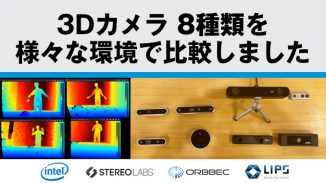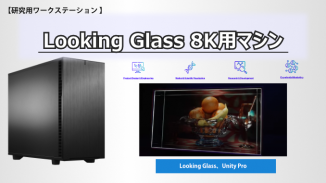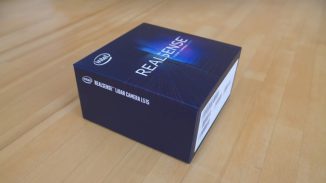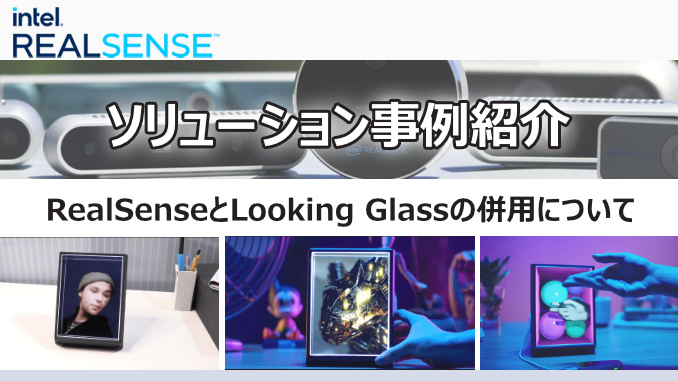
Earlier this year (January 2021) Looking Glass Factory released the latest model of Looking Glass Portrait, a 1D holographic display.
We'll show you what Looking Glass Portrait is all about, and what you can do with it with a RealSense depth camera.
* This article refers to the following WEB pages
Looking Glass and Intel RealSense Depth Cameras
What is Looking Glass Portrait?
looking glass portraitLooks like a “digital photo frame” at first glance, but in reality it's for artists, designers, developers, filmmakers, photographers, and even enthusiasts looking to capture and create 3D content. , A personal holographic display designed for all kinds of people.
The VR headset (VR head-mounted display) required to display 3D content changes the appearance of the content depending on the movement and angle of the viewer.However looking glass portrait With, you will be able to share and view 3D content in real time with a large number of people without a VR headset.
* Please refer to this article for Looking Glass Portrait.
What is holographic?
Holographic is simply a recording and playback mechanism that uses "light". "Light" is actually interference (intensifying or weakening each other's light), which is a phenomenon that occurs when two or more lights overlap, and interference, which is a fringe of light and darkness caused by the interference. It is a technology that utilizes the wavelength, intensity, and phase (timing) of fringes.
The hologram is a three-dimensional photograph made by holography (A type of photosensitive materialThis is a medium on which light is recorded, such as a photographic plate). By reproducing this hologram, you will be able to see the recorded three-dimensional object as a three-dimensional image.
How do you work with Intel RealSense technology?

Many of us are already familiar with video conferencing and calling software, but with holographic communication, it has the potential to be completely different.According to some statistics, the ratio of non-verbal communication such as body language, facial expressions, and gestures is 70 to 93% in communicating with others.If holographic communication can accurately understand and infer the intentions and opinions of others from 3D stereoscopic images, communication between the two sides may become more open.
The Intel RealSense Camera can capture the subject as it is, so it can be used as a peripheral device for recording and playback of holographic displays. Content recorded using the Intel RealSense camera can be played back in Looking Glass Portrait as a still image or video.
For this reason, the Intel RealSense camera may be used as a real-time holographic communication system, as if the users were actually face-to-face, even on a telephone using an Internet line.
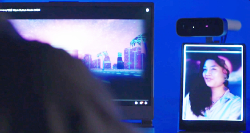
Example: 3D content captured using Azure Kinect DK or RealSense
A new way to see things

We're used to seeing content on a 2D screen like a typical TV, but in fact much of the content we're used to is produced in 3D, and they're easy on a 3D holographic display. Can be linked to.
For example, many video games are a collection of 3D rendered assets (various material data required for production) in real time, and using a 3D holographic display may give you a new experience.
In games using VR headsets (VR dungeon RPG games), you can "see" every corner of the dungeon by physically moving your head, but on a holographic display it is the same without a headset. Will be possible.

Example: You can see 3D content even if the viewing angle (position) is different.
The same is true for 3D movie formats. Re-rendering may be required to see the holographic screen without using 3D glasses, but this content already exists and can be linked.
For designers, architects and creators, holographic displays can be a good way to not only "see" your work at an affordable price, but also to share it with your clients and customers and feel it intuitively. I will.If you use the Intel RealSense camera to scan your work or production, you may be able to feel the world view in a completely different way.
About Depthkit
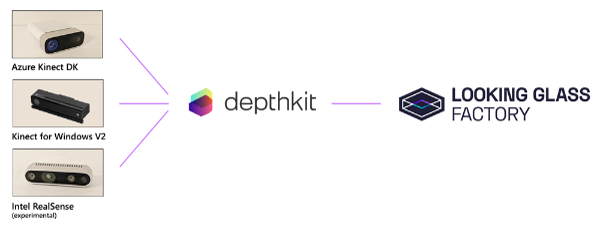
Introduced in the Looking Glass user guide, Depthkit is a tool that captures color and depth data from a depth sensor.With this tool, you can record real-world scenes and play them back as 3D stereoscopic images on Looking Glass.
The Looking Glass User Guide "Depthkit"
http://docs.lookingglassfactory.com/Depthkit/
[Hardware requirements]
To use Depthkit, you need a camera for one of the following 3D capture sensors and a PC environment with the recommended specifications of Looking Glass.
- Kinect for Windows V2
- Azure Kinect (requires Depthkit Pro)
- Intel RealSense (limited experimental support)
* To output Depthkit data to Unity or Depth Media Player, Depthkit Record or above is required. Depthkit website please use this form..
Finally
Not limited to Intel's RealSenseMany of the cameras we handle can be handled from "one"..In addition, a service for R & D "Rental service tegakariYou can also use it.Please use it when you want to actually use it.
Introduced in this articleLooking Glass Portrait is a pre-ordered product from the manufacturer as of April 2021, 4.Unipos accepts reservations for this product.Please feel free to contact us.


